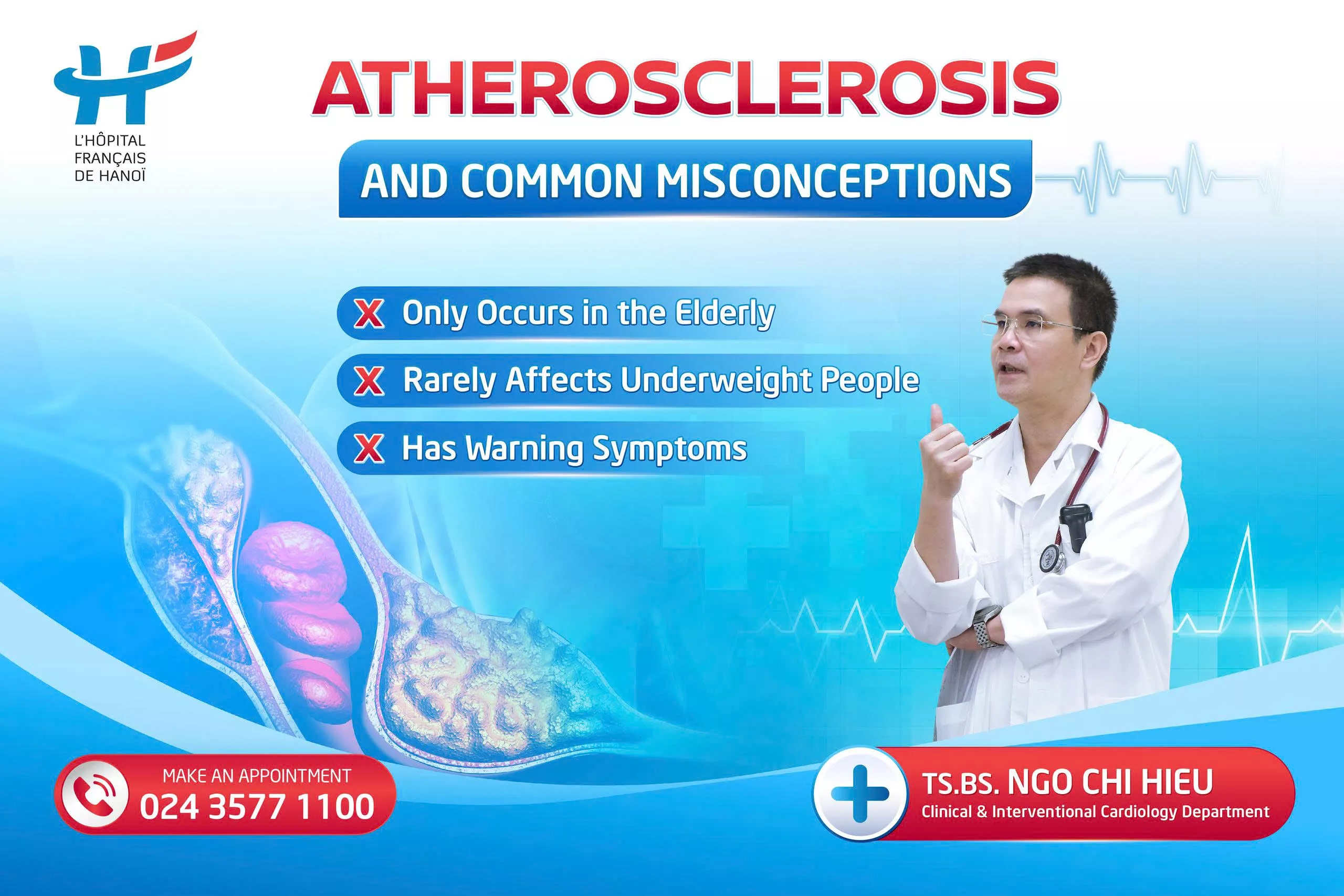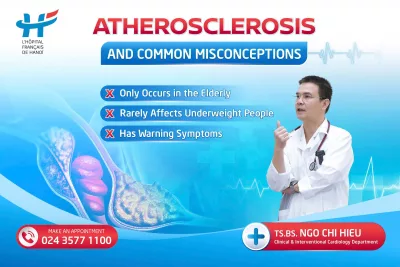The disease occurs when the endothelium – the inner lining of the blood vessel walls – experiences small tears and openings, where cholesterol and inflammatory cells can easily infiltrate and accumulate. This gradually forms atherosclerotic plaques. Over time, these plaques not only narrow the artery lumen but also cause the vessel walls to lose their natural elasticity.
More dangerously, atherosclerotic plaques can suddenly rupture, triggering the formation of blood clots at the site – a direct cause of vascular obstruction, acute myocardial infarction, or stroke. Atherosclerotic damage is not limited to the heart but can occur in many other vascular systems. Therefore, the European Society of Cardiology and other major health organizations have identified atherosclerosis as the main underlying cause of serious cardiovascular events.
However, many misconceptions about this disease still exist in the community – which may lead to negligence or delay in necessary treatment. Dr. Ngo Chi Hieu – Department of Clinical and Interventional Cardiology, Hanoi French Hospital – shares some common misconceptions:
“Atherosclerosis only occurs in the elderly”: In fact, endothelial damage can begin very early, especially in individuals with risk factors such as smoking, diabetes, hypertension, dyslipidemia, or a family history of early heart disease.
“Underweight people do not get atherosclerosis”: Recent studies have shown that visceral fat and intramuscular fat – even if not reflected in weight or appearance – can still increase the risk of atherosclerosis and myocardial infarction.
“Atherosclerosis always has warning symptoms”: The disease often progresses silently for many years. Clear symptoms usually appear only when the artery is narrowed by more than 70%, at which point the heart does not receive enough blood to function normally.
Due to its silent progression, early detection and risk control are key to preventing serious complications. Screening for atherosclerosis is not complicated. A cardiologist will conduct a clinical assessment, measure blood pressure, perform lipid and blood sugar tests, echocardiography, electrocardiography, etc. In cases where coronary artery damage is suspected, a coronary CT angiography – a non-invasive, highly accurate diagnostic method – will be additionally indicated.
At Hanoi French Hospital, patients can access European-standard medical services:
- Consultation and examination with Dr. Ngo Chi Hieu – PhD in Internal Cardiology, former Head of the Cardiovascular Intensive Care Unit – Hanoi Heart Hospital; and Dr. Pham Thu Thuy, Level II Specialist trained in France and formerly working at Bach Mai Hospital.
- A modern system of diagnostic equipment: color Doppler echocardiography, exercise ECG, transesophageal echocardiography, coronary angiography, etc.
- A state-of-the-art coronary angiography and DSA interventional suite, strictly complying with infection control regulations.
- Comprehensive cardiovascular screening packages – suitable for both symptomatic patients and those wishing to assess their hidden risk factors.
For more information or to book an appointment with an HFH specialist, please contact our HOTLINE 024.35771100, message the “Hanoi French Hospital” Fanpage, or use our Zalo OA zalo.me/2008009049335817955.


